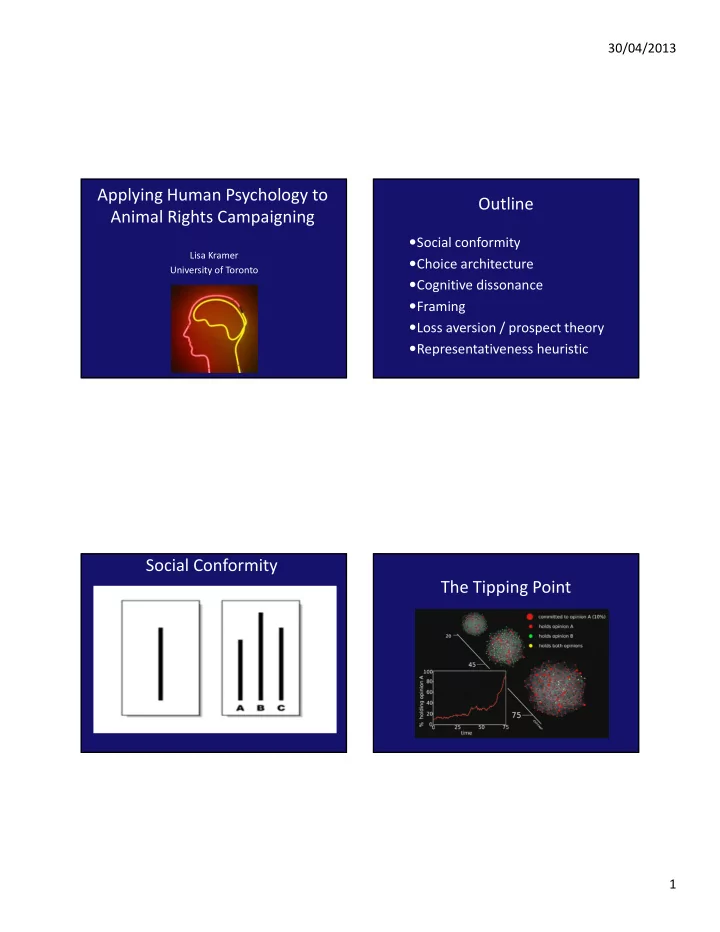

30/04/2013 Applying Human Psychology to Outline Animal Rights Campaigning Social conformity Lisa Kramer Choice architecture University of Toronto Cognitive dissonance Framing Loss aversion / prospect theory Representativeness heuristic Social Conformity The Tipping Point Asch’s lines 1
30/04/2013 A Recent Example of Social Another Recent Example of Social Pressure in Action Pressure in Action Control Group: Saw no voting message from Facebook (600,000 people) Experimental Group 1: Saw neutral “Get out the vote” ad (60 million people) Experimental Group 2: Saw the ad below embedding information about friends who voted (600,000 people) Choice Architecture Creative Thinking Exercise (“Nudging”) Consider two (caricatures of) campaign messages: Campaign 1: “Lots of people eat animal products even though doing so causes environmental damage, animal suffering, and adverse human health outcomes. This is bad. Don’t eat animal products!” Campaign 2: “The majority of your neighbours have cut back on their consumption of animal products, helping the environment, animals, and their health!” 2
30/04/2013 Definition: Nudge • “Nudges are ways of influencing choice without limiting the choice set or making alternatives appreciably more costly in terms of time, trouble, social sanctions, and so forth. They are called for because of flaws in individual decision ‐ making, and they work by making use of those flaws.” ⁻ Hausman & Welch (2010, Journal of Political Philosophy) p. 126 • “First, never underestimate the power of inertia. Second, that power can be harnessed.” ⁻ Thaler and Sunstein (2009) Examples of Nudges Examples of Nudges (continued) A study of the effect of placement of food in cafeteria: A line displaying “healthier” food more prominently sold 18% more healthy food than another line. (Hanks et al., 2012) Making serving utensil more difficult to reach for less “healthy” food reduced intake by 8 ‐ 16%. (Rozin et al., 2011) 3
30/04/2013 Cognitive Dissonance A situation where two beliefs contradict each other, leading to emotional turbulence 4
30/04/2013 Framing 5
30/04/2013 Loss Aversion / Prospect Theory Representativeness Heuristic “Losses loom larger than gains” ‐ Daniel Kahneman & Amos Tversky (1979) Related Reading Thank you! 6
Recommend
More recommend